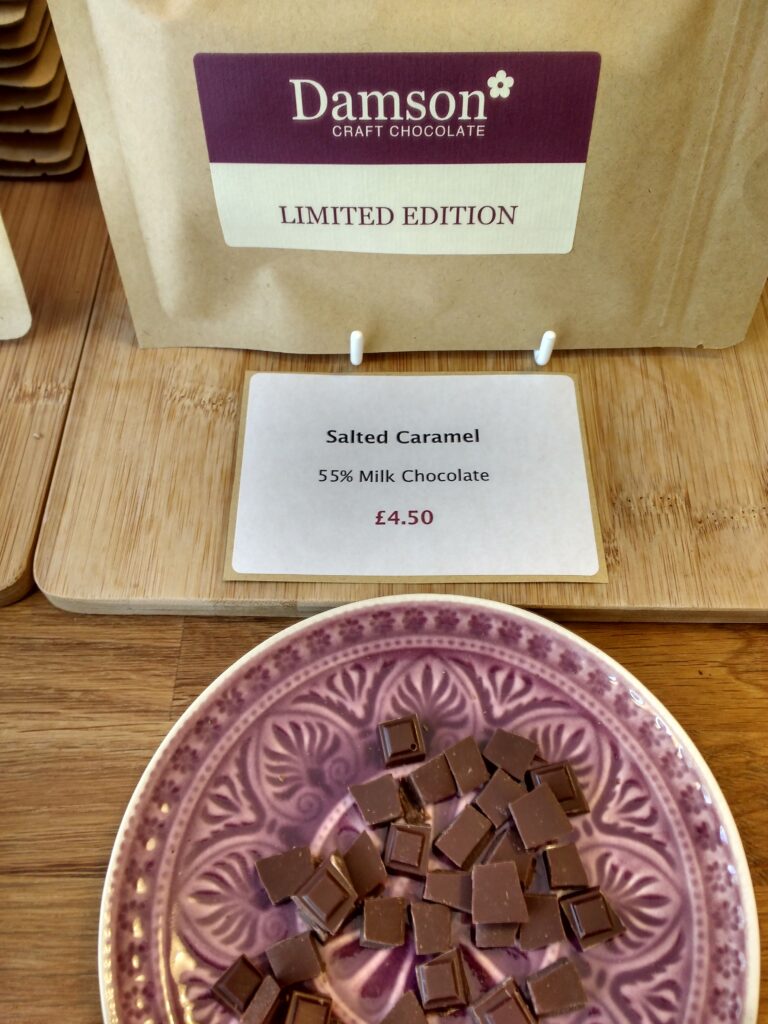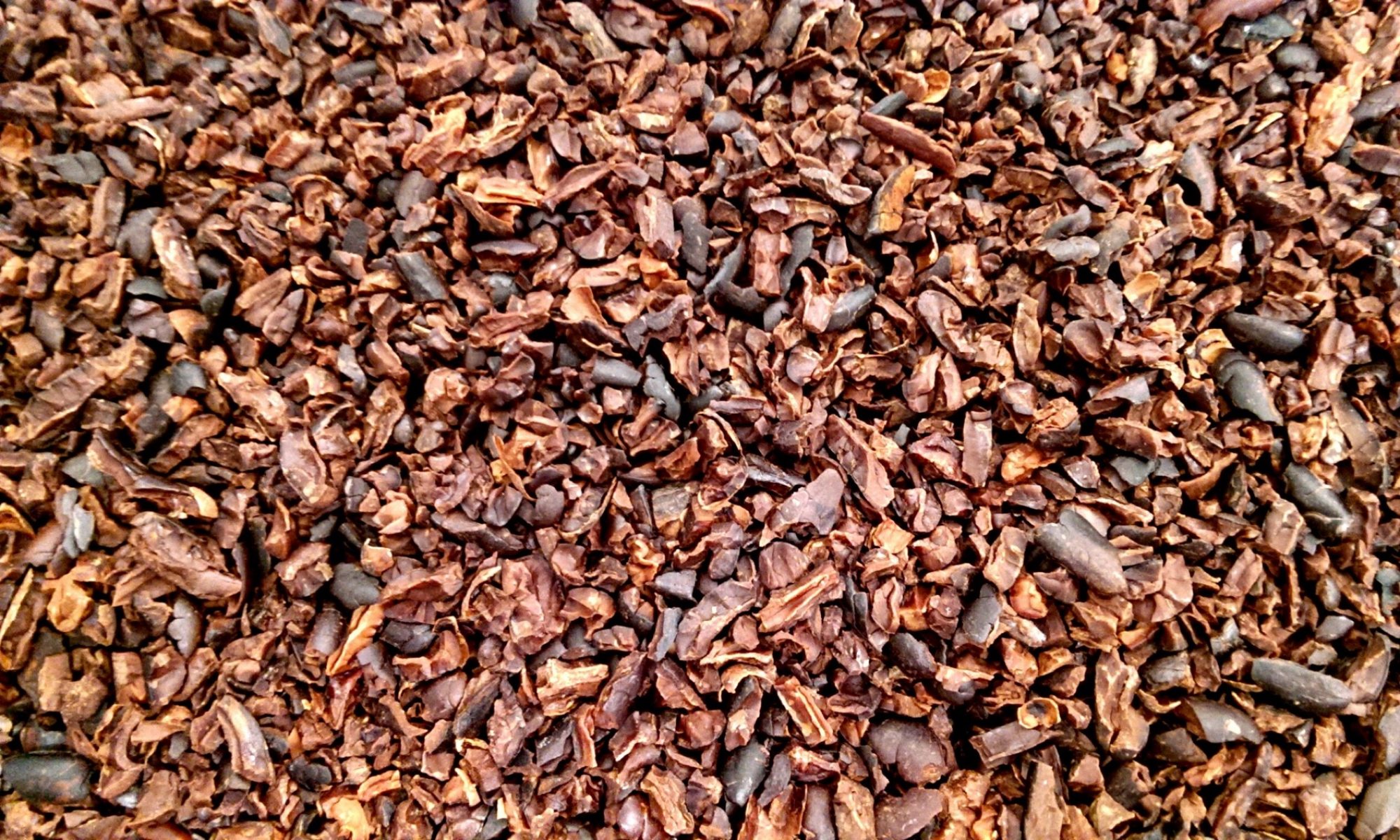- Synopsis
- A classic dark milk chocolate with caramelised sugar and see salt..
- Author
- Dom Ramsey / Damson Chocolate
- Version
- 1.0
- License
- Creative Commons Attribution 4.0 International
- Short URL
- xtc.tc/110
- Last Updated
- 22 June 2020
Ingredients
- 45% Cocoa Nibs
- 10% Cocoa Butter
- 14% Whole Milk Powder
- 30% Caramelised Unrefined Cane Sugar
- 0.5% Sea Salt
- 0.5% Sunflower Lecithin
Technical Information
- Roast: Standard (20 minutes @ 120°C)
- Grind / Conch time: Standard (24 hours for 3kg Premier grinders, 72 hours for 30kg CocoaTown melangers)
Method
- Make a dry caramel from the cane sugar. Heat in a pan until sugar melts and caramelises to a golden brown colour. Pour the caramel onto a heatproof tray and allow to cool to room temperature. The caramel should set like glass. If necessary, this step can be done in multiple batches.
- Break the hard caramel into pieces (break with a heavy object if necessary) and place the pieces into a powerful blender. Blend into a fine powder.
- Sort and roast beans.
- After cooling, break and winnow.
- Slowly add nibs to heated melanger.
- Add pre-melted cocoa butter. This can be added in parallel with the cocoa nibs to help speed the process.
- Slowly add the milk powder and powdered caramel. Give the melanger a few minutes to refine the powdered ingredients before adding more, so it doesn’t become too thick and unwworkable.
- Add the sea salt.
- Allow to grind / conch for prescribed time.
- One hour before the end of the cycle, add the lecithin.
- Pour into containers and allow to set.
- Temper as per the milk chocolate settings on your tempering machine.

Notes
Use an unrefined cane sugar to make the caramel. Billington’s Golden Caster Sugar works very well here.
The caramel gives a great flavour to this dark milk chocolate, and it works well with a variety of cacao origins.
Be sure to use the caramel powder quickly after preparation. It is quite hygroscopic, meaning it will attract moisture from the atmosphere and go sticky if exposed to the air for too long. The same phenomenon can also occur in the finished chocolate, particularly in humid environments or when in the cooling fridge post-tempering. Be sure to remove tempered bars from the fridge promptly and package them quickly to help prevent moisture affecting your bars. In most circumstances, the chocolate will be as stable as a regular milk chocolate.
There are a wide range of milk powders available on the market, and we usually recommend going with a locally sourced product. Generally full fat cows milk will produce the best flavour, but this recipe also works great with creamy buffalo milk powder.
Depending on the natural flavour notes on your chosen cacao, you might also want to add a little powdered vanilla to this recipe to help enhance the caramel flavour.
We like to use Sunflower Lecithin in our chocolate as this can also have a significant impact on viscosity and make moulding much easier. We use it in preference to Soy Lecithin which some people have allergies to. Again, if your chocolate flows readily you may want to omit this entirely and increase the nib content.
License

Salted Caramel Milk Chocolate 55% by XTC Chocolate is licensed under a Creative Commons Attribution 4.0 International License.
Based on a work at https://xtc.tc/110.
Permissions beyond the scope of this license may be available at https://xtcchocolate.com/licensing/.
